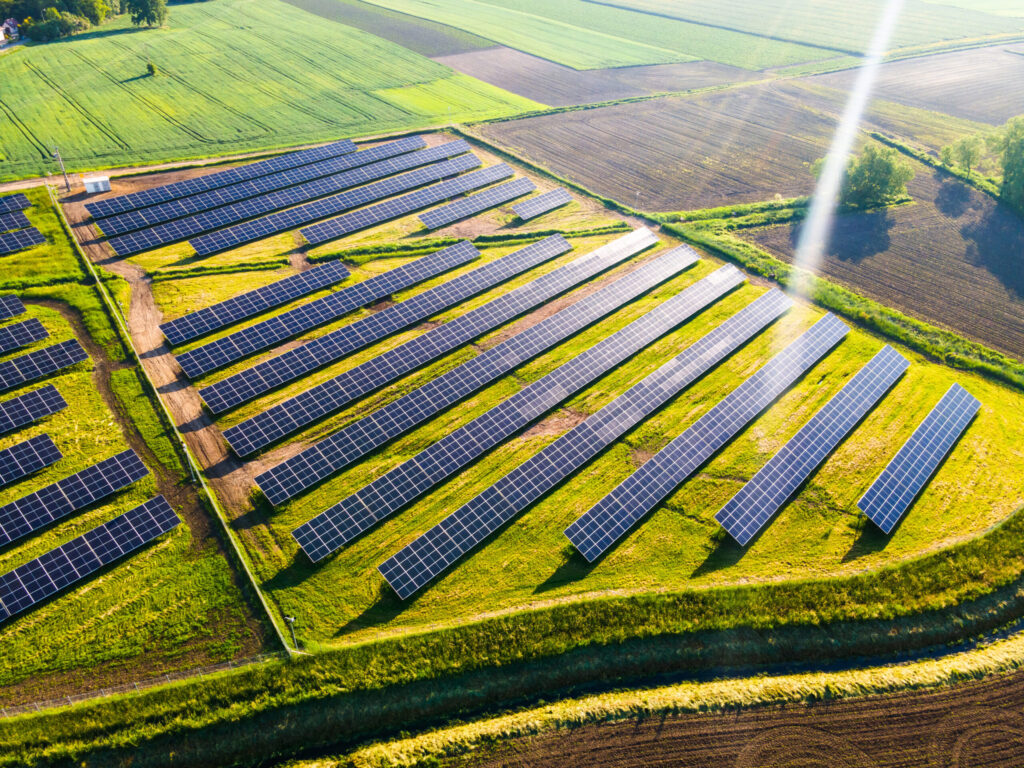Clean Power 2030: The UK’s Bold Path to a Sustainable Energy Future
As global efforts to combat climate change accelerate, the UK is embarking on a bold journey to transform its energy landscape with the groundbreaking Clean Power 2030 initiative. This ambitious strategy is designed to position Britain as a worldwide leader in clean, cost-effective, and dependable energy production by the close of this decade, directly supporting the nation’s broader goal of reaching net-zero carbon emissions.
What Is Clean Power 2030?
Clean Power 2030 represents the UK government’s comprehensive plan to overhaul the national electricity system, aiming for a predominantly zero-carbon grid. Inspired by strong policy commitments—such as the Labour Party’s promise in the 2024 election to position Britain as a “clean energy superpower”—this initiative aspires to generate enough renewable energy to meet the country’s entire annual electricity demand. By 2030, the goal is for at least 95% of all electricity produced in the UK to come from low-carbon sources, marking a major leap toward a sustainable energy future.
The Vision for 2030
By 2030, Great Britain has set ambitious goals to revolutionize its energy landscape and build a sustainable, secure, and resilient power system. The key objectives include:
– Meeting the Entire Annual Electricity Demand with Clean Energy The nation aims to produce sufficient renewable and low-carbon electricity to satisfy all of its yearly consumption needs. This means the UK will no longer rely on imported or fossil-fuel-based power, ensuring a self-sufficient and environmentally friendly energy supply.
– Drastically Reducing Carbon Intensity: The target is to lower the carbon emissions associated with electricity generation to below 50 grams of CO₂ equivalent per kilowatt-hour (gCO₂e/kWh). This represents a significant reduction from approximately 171 gCO₂e/kWh in 2023, reflecting a major stride toward decarbonizing the power sector and combating climate change.
– Creating a Resilient and Flexible Energy System: The UK aims to develop an adaptable energy infrastructure capable of accommodating fluctuating renewable outputs and technological innovations. A flexible system will support economic growth by attracting investments, enhance energy security by diversifying sources, and help meet climate commitments through reliable and low-carbon power generation.
Achieving these goals requires a comprehensive approach—expanding renewable capacity, modernizing the grid, deploying innovative storage solutions, and fostering a skilled workforce—all working together to deliver a sustainable and resilient energy future for Britain.
By 2030, the UK is determined to transform its energy system to be predominantly sustainable and environmentally friendly. The core objectives include:
– Fulfilling the Entire Annual Electricity Demand through Renewable and Low-Carbon Sources: The UK aims to generate enough clean energy—primarily from renewable sources like wind, solar, and hydro—to meet the total electricity needs of the nation each year. This shift will drastically reduce dependency on imported fossil fuels and create a more self-sufficient energy infrastructure, enhancing resilience and stability.
– Reaching 95% Clean Energy Generation: The goal is for at least 95% of all electricity produced in Britain to come from low-carbon and renewable sources. This marks a monumental reduction in reliance on traditional fossil fuels such as coal, oil, and natural gas. By doing so, the UK will significantly cut greenhouse gas emissions associated with electricity production, aligning with its climate commitments and setting a global example for sustainable energy practices.
– Reducing Carbon Emissions from Electricity to Support Net-Zero Targets: The overarching aim is to slash the carbon footprint of the electricity sector, pushing emissions well below current levels. Achieving this will play a vital role in the UK’s broader ambition to reach net-zero greenhouse gas emissions by 2050. Lowering emissions from electricity not only benefits the environment but also contributes to cleaner air, improved public health, and the creation of green jobs, fostering a sustainable economic recovery.
This comprehensive approach involves expanding renewable energy capacity, upgrading grid infrastructure for better integration, investing in innovative storage technologies to balance supply and demand, and promoting policies that accelerate the transition to a low-carbon economy. Through these efforts, the UK is paving the way for a cleaner, greener, and more energy-secure future by 2030.

Core Strategies to Achieve Clean Power 2030
1. Massive Expansion of Renewable Energy
– Offshore wind will be the cornerstone, with plans to develop 43-50 gigawatts (GW).
– Onshore wind and solar power will also see substantial growth.
2. Grid Modernization and Infrastructure Upgrades
– The National Energy System Operator (NESO) is streamlining grid connection processes to accelerate project deployment.
– Upgrading transmission networks to handle increased renewable capacity and digitalizing grid management are essential steps.
3. Energy Storage Solutions
– Developing 23-27 GW of battery storage and 4-6 GW of long-duration energy storage to ensure a stable power supply amid intermittent renewables.
4. Supporting Technologies and Innovations
– Investment in low-carbon technologies such as nuclear power, carbon capture and storage (CCS), and hydrogen.
– Promoting Demand Side Response (DSR) initiatives that empower consumers to adjust their energy demand, enhancing grid flexibility.
5. Maintaining a Role for Gas with Carbon Capture
– While transitioning away from fossil fuels, the UK plans to keep some gas-fired power plants operational, equipped with CCS to reduce emissions, serving as a backup during renewable shortfalls.
6. Skilled Workforce and Community Engagement
– Training programs to develop a “clean power army” of professionals.
– Collaborating with local communities to ensure benefits from infrastructure development.
Challenges and How They’re Being Addressed
– Addressing Grid Connection Bottlenecks: One of the significant challenges to achieving the 2030 clean power goals is the existing congestion and delays in connecting new renewable energy projects to the national grid. Lengthy planning approval processes, limited infrastructure capacity, and bureaucratic hurdles can slow down deployment. To overcome these obstacles, comprehensive reforms are being implemented to streamline the planning and grid connection procedures. These reforms aim to reduce administrative delays, improve coordination among stakeholders, and expand grid capacity where needed, ensuring that renewable projects can be brought online more quickly and efficiently.
– Maintaining Project Delivery Momentum: Achieving the ambitious targets set for 2030 requires a sustained and robust pipeline of renewable energy projects. This depends heavily on continuous investment from both public and private sectors, as well as unwavering political commitment. Ensuring consistent support for project development, from initial planning through to construction and operation, is essential. Policies that provide clarity, stability, and incentives will help maintain investor confidence and accelerate project timelines, helping to keep the momentum alive and on track for the nation to meet its clean energy goals.
– Bridging Capacity Shortfalls: As the deployment of renewable energy accelerates, it is crucial to monitor the project pipeline closely to identify potential gaps in capacity that could hinder progress. Without careful oversight, delays or cancellations could lead to shortfalls in the necessary generation capacity to meet demand. To mitigate this risk, authorities are increasing funding for renewable projects, fast-tracking approvals, and supporting innovative technologies. Ongoing assessment and adaptive planning are vital to ensuring that the UK’s clean power infrastructure expands at the required pace, effectively bridging any capacity shortfalls and guaranteeing a reliable and sufficient energy supply by 2030.
The Path Forward: How the UK Will Achieve Its Clean Power Goals
The UK’s approach involves accelerating renewable energy deployment – especially offshore wind – coupled with grid reforms and investment in storage and innovative technologies. The government is also focusing on policy reforms to facilitate faster project approvals and community engagement to ensure the energy transition benefits local populations.
What Will the UK’s Energy Mix Look Like in 2030?
By 2030, the UK’s energy landscape is set to undergo a remarkable transformation, moving toward a cleaner, more sustainable future. The country aims to drastically reduce its reliance on fossil fuels and ramp up renewable energy sources to meet its climate goals.
The backbone of this new energy system will be offshore wind, with capacity reaching around 43-50 gigawatts. Offshore wind farms will provide about half of the UK’s electricity, harnessing vast ocean resources to generate clean power. Complementing this, onshore wind and solar power will also see significant growth, with solar capacity expected to reach nearly 45 gigawatts.
To ensure a stable supply despite the intermittent nature of renewables, large-scale battery storage and long-duration energy storage systems will be vital. These will help balance supply and demand, keeping the lights on even when the wind isn’t blowing or the sun isn’t shining.
While renewables will dominate, some low-carbon gas plants with carbon capture technology will remain as backup power sources. Additionally, hydrogen produced using renewable energy will play an increasing role in power generation and industry.
Overall, by 2030, fossil fuels will account for less than 5% of the UK’s electricity. The future energy mix will be cleaner, more resilient, and better aligned with the country’s commitment to achieving net-zero emissions. Britain is on track to become a global leader in sustainable energy, paving the way for a greener tomorrow.
Why Clean Power 2030 Matters
The UK’s commitment to achieving Clean Power 2030 is more than just an ambitious goal—it’s a vital step toward a sustainable and resilient future. This initiative aims to drastically reduce carbon emissions from electricity generation, helping the UK meet its climate targets and fight global warming.
Transitioning to mainly renewable energy sources like wind and solar will cut dependence on fossil fuels, improve air quality, and create thousands of green jobs. It also enhances energy security by increasing self-sufficiency and reducing reliance on imported fuels.
Moreover, Clean Power 2030 supports economic growth by attracting investments in innovative technologies and infrastructure. It ensures a reliable, affordable power supply for homes and businesses while protecting the environment for future generations.
In short, Clean Power 2030 is essential for building a cleaner, healthier, and more sustainable UK—one that leads the way in tackling climate change and shaping a greener tomorrow.
In Summary:
The UK’s Clean Power 2030 initiative is a bold, forward-looking plan to overhaul the country’s energy landscape. Through massive investments in renewable energy, grid modernization, innovative technologies, and community involvement, Britain is on track to deliver a cleaner, greener, and more secure energy system by the end of this decade. This transition not only aligns with climate commitments but also positions the UK as a global leader in sustainable energy innovation.
Contact Energy Gain UK – we’re here to help you optimise your energy strategy and reduce costs and build a more sustainable energy.
☎️ 0161 330 7739 | ✉️ info@energygain.co.uk

